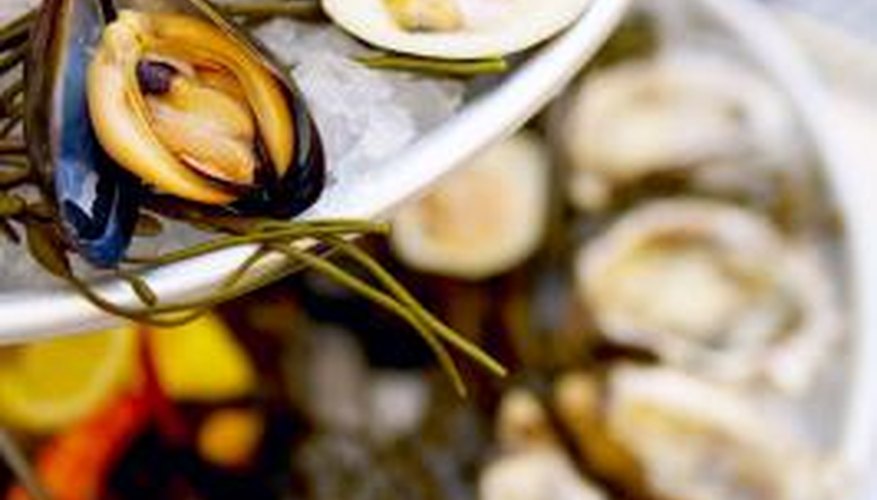Mussels are a type of mollusc that live on the bottom of the body of water they inhabit. There are freshwater and saltwater varieties. Using a type of foot to move along the sandy floor of lakes and oceans, mussels can relocate themselves to new areas for better feeding opportunities. Mussels are a staple food on many seafood menus. The mussels are carefully selected by a chef to make sure the shells are intact and the animal inside is whole. These mollusks can be steamed, pan fried or baked and take very little cooking time.
- Mussels are a type of mollusc that live on the bottom of the body of water they inhabit.
- The mussels are carefully selected by a chef to make sure the shells are intact and the animal inside is whole.
The Shell
The shell of a mussel is hard and can be toxic. This is the outer casing of the animal and must be broken open to reach the edible parts.
The Small Hinge
There is a tendon-like hinge that attaches the top and bottom shells together. Do not eat this portion of the mussel, as it's not edible and could be very sour.
The Meat
Eat the inside of the mussel with a fork and dip the small morsel in broth if you like. If you are eating mussels at home or an informal setting, you can slurp the entire mussel right out of the shell without using any utensils. Mussels are served either on the half-shel, or you may have to break open the shell with your fingers to reach the middle.
- There is a tendon-like hinge that attaches the top and bottom shells together.
- If you are eating mussels at home or an informal setting, you can slurp the entire mussel right out of the shell without using any utensils.
Time frame
If you cook mussels yourself and you have leftovers, refrigerate and eat them in one or two days or they will go bad. Refrigerate them in the shell and do not separate the meat from the shell until you're ready to enjoy them.
